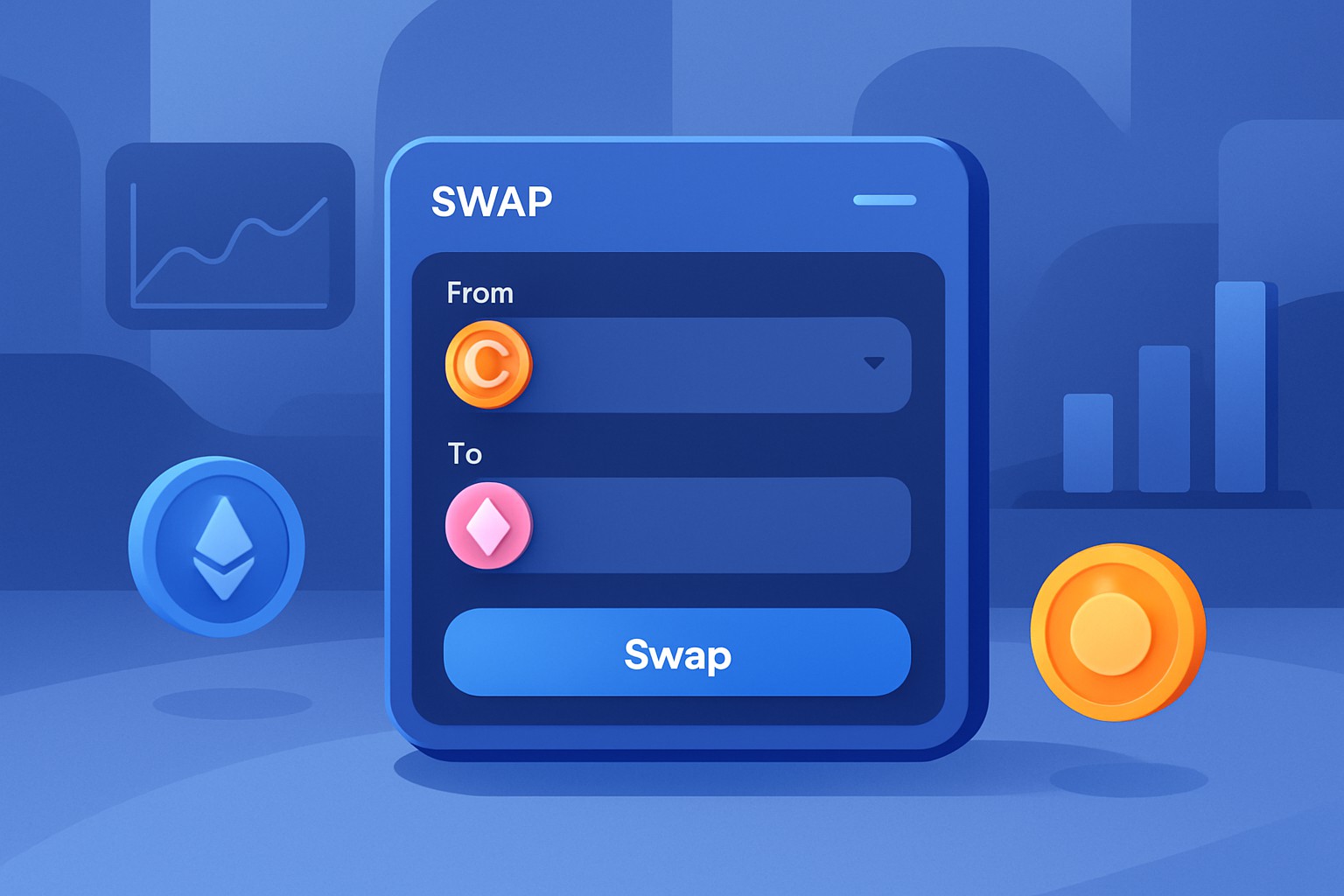How Cetus Simplifies Swap Transactions


This article takes you on a walkthrough of how the Cetus protocol simplifies decentralized token swapping making it faster and more efficient for everyone—from newbies to seasoned pros.
- Discover how Cetus takes the headache out of DeFi swaps with low fees and minimal slippage and a clean easy-to-use interface that’s welcoming no matter your skill level.
- Follow an easy step-by-step guide that shows you how to swap tokens securely and efficiently across multiple blockchain networks using Cetus—no stress just smooth sailing.
- Dive into how Cetus’s cutting-edge AMM technology speeds up execution and boosts liquidity leaving traditional platforms in the dust.
- Pick up practical tips on fine-tuning your swap transactions including how to keep slippage in check and the best moments to hit that swap button.
- Get the lowdown on troubleshooting common hiccups like stuck transactions and wallet glitches so your swaps keep humming along without a hitch.
Swap transactions in decentralized finance or DeFi are the backbone operations that allow users to trade one cryptocurrency token for another on platforms like Cetus without relying on middlemen. Many people run into hurdles like confusing interfaces, surprise fees, annoying slippage, and painfully slow transaction speeds. These bumps in the road often make it tougher for newcomers to step in and slow down the broader adoption of DeFi.
Getting to Know Cetus and What It Brings to the Table in DeFi Swaps
Cetus is a decentralized swap protocol designed to make token swaps feel as smooth as silk. It offers low fees, deep liquidity and user-friendly features that anyone can appreciate. Nestled in the ever-expanding DeFi universe, Cetus aims to shake things up by speeding up exchanges and boosting compatibility across many blockchain networks.
- Cetus boasts some of the lowest transaction fees you will find in the DeFi swap world. It’s a nice way to keep overall costs in check.
- It offers more stable prices and keeps slippage annoyingly low thanks to its hefty liquidity pools. Any trader will appreciate this.
- The interface is straightforward and user-friendly so whether you are a newbie or a seasoned pro getting the hang of it should not be a headache.
- Cross-chain compatibility is built in and lets you swap tokens across different blockchain networks without breaking a sweat.
- Under the hood, automated market making (AMM) technology powers consistent trade execution. It relies on smart algorithms to do the heavy lifting.

Step-by-Step Guide on How to Nail Your Swap Transactions with Cetus
Securely link your digital wallet to the Cetus platform to kick off your swapping adventure.
Choose the tokens you want to trade—just double-check that Cetus supports them.
Punch in the amount of the original token you’d like to swap and mind any minimum limits they might have.
Take a good look at the quoted price, expected slippage and estimated transaction fees before you move forward. Better safe than sorry.
When you’re ready, confirm the transaction and approve it through your wallet. Then play the waiting game as the blockchain does its magic.
Keep tabs on your swap’s progress using the platform’s handy transaction monitor or your wallet’s explorer. Patience is a virtue here.
Start by linking up a wallet that works well with the platform, like MetaMask or Trust Wallet. Make sure it’s loaded with funds and set to the right network. Skipping this step is a rookie mistake. When choosing tokens, it’s smarter to stick with those that have high liquidity because this helps prevent unexpected price swings. Also, keep an eye on the fees since they can change depending on how busy the network is at any time.
How Cetus Makes Swap Transactions Smoother and Way More User-Friendly Than the Old-School Ways
Traditional swap platforms often cause high slippage for users and have complicated interfaces that feel like navigating a maze. Slow execution and limited liquidity add to the headache. Cetus steps up by leveraging an advanced automated market maker system that keeps liquidity flowing freely. This in turn minimizes slippage. Its clean and straightforward interface cuts through the usual platform clutter to give you a much more pleasant experience. Meanwhile, the finely tuned backend speeds up transactions.
| Swap Platform | Fees | Slippage Rate | User Interface Complexity | Transaction Speed | Liquidity Depth |
|---|---|---|---|---|---|
| Cetus | Very low (around 0.2%) | Tiny slip (under 0.5%) | Clean and a breeze to use | Fast — just seconds really | Robust and dependable |
| Traditional DEX A | High (about 0.5 to 1%) | Moderate to fairly steep (1 to 3%) | Packed and a bit of a maze | Decent pace (minutes tick by) | Average, nothing flashy |
| Traditional DEX B | Moderate (between 0.3 and 0.6%) | On the higher side (2 to 5%) | Pretty straightforward, no surprises | Slow going (measured in minutes) | Limited options |
| CEX Swap Feature | Varies | Low (under 0.5%) | Simple and easy to find your way around | Quick (a matter of seconds) | Depends a lot on the platform |
| AMM Protocol X | Low (around 0.25%) | Moderate (about 1%) | Technical and not exactly inviting | Moderate speed (minutes) | Moderate depth, nothing too wild |
Choosing Cetus means opting for a swapping platform that is not only cost-effective but also quick and a breeze to use. The protocol is cleverly designed to keep price impact minimal and speed up transactions, making it a solid alternative to the usual DeFi exchanges—especially if you’re just dipping your toes into swapping or juggling large token trades.
Helpful Tips and Best Practices for Getting the Most Out of Cetus (Because Who Does not Want to Master It?)
- Always keep your wallet’s private keys or seed phrases under lock and key and never share them with anyone no matter how convincing they sound to avoid unauthorized access attempts.
- Keep a sharp eye on fluctuating network fees because timing your transactions right can save you a nice chunk of change.
- Whenever you get the chance, use limit orders to control your entry prices and avoid surprise slippages.
- Regularly check the liquidity pools for your favorite token pairs to make sure the swap conditions are fair.
- Double-check that your wallet app and the Cetus interface are updated to the latest version since keeping up with security patches and new features is well worth the effort.
Really get the most out of Cetus by sticking to solid wallet security habits. After all, you want to keep your assets safe. Keep an eye out for network congestion because it tends to increase fees when things get busy. Whenever you can, use tools like limit orders since they give you better control over prices during swaps and can feel like a breath of fresh air. Also, checking liquidity pools every now and then is a good idea because it helps you gauge possible price shifts and those pesky slippage risks.
Troubleshooting Frequent Issues with Cetus Swap Transactions A Handy Guide
A quick fix is to bump up the gas fees or resend the transaction altogether.
Give your wallet a good refresh and double-check what’s going on using a blockchain explorer. It’s saved me more than once.
Simply reconnecting, restarting your browser or updating the wallet app does the trick.
Nudging it up just a notch can help smooth out those little price wobbles.
If possible, try to time your swaps when fewer people are crowding the network. It really makes a difference.
Many issues on Cetus often resolve themselves with straightforward troubleshooting. This can include tweaking gas fees to nudge things along faster, refreshing your wallet balance, or adjusting slippage settings to better ride market swings. Keeping your wallet and platform updated usually cuts down on pesky errors and connection hiccups.
Frequently Asked Questions
What wallets are compatible with Cetus?
Cetus works with popular Web3 wallets like MetaMask and Trust Wallet. To get started, connect a compatible wallet loaded with funds and set to the right blockchain network where Cetus operates for the tokens you want. It’s like picking the right lane on a busy highway—get it right and you’re cruising.
How does Cetus minimize slippage and high fees?
Cetus relies on deep liquidity pools with a clever automated market maker system. This duo keeps prices steady when trading larger amounts which means slippage stays low. Plus, the protocol strives to keep transaction fees among the leanest in the DeFi swap world—a win for those who don’t like paying extra.
Can I swap tokens across different blockchains using Cetus?
Absolutely. One standout feature is its cross-chain compatibility. It lets you swap tokens across multiple blockchain networks using one easy interface. No more hopping between bridges or exchanges—just a straightforward swap that saves time and sanity.
What should I do if my swap transaction is stuck or pending?
If your transaction gets stuck or drags on, it’s usually due to network congestion or a gas fee set too low. Think of it like trying to get through a crowded toll booth with exact change—sometimes you must pay a little extra to move things along. You can bump up the gas fee or try sending the transaction again. Also, swapping during off-peak network hours helps you dodge traffic jams.
How can I check if my swap was successful?
You can check your swap status on the Cetus platform using their transaction tracker. If you prefer, your wallet’s connected blockchain explorer is a solid way to double-check that everything went through and to see your updated token balances. It’s always nice to get confirmation—nothing beats the feeling when you know your move went off without a hitch.
Are there any best practices for securing my assets on Cetus?
Keeping your wallet’s private keys or seed phrases under lock and key is the golden rule—never share them. Also, make sure both your wallet app and the Cetus interface are up to date to get the latest security fixes. These steps might sound basic but they’re vital for keeping your assets safe.






